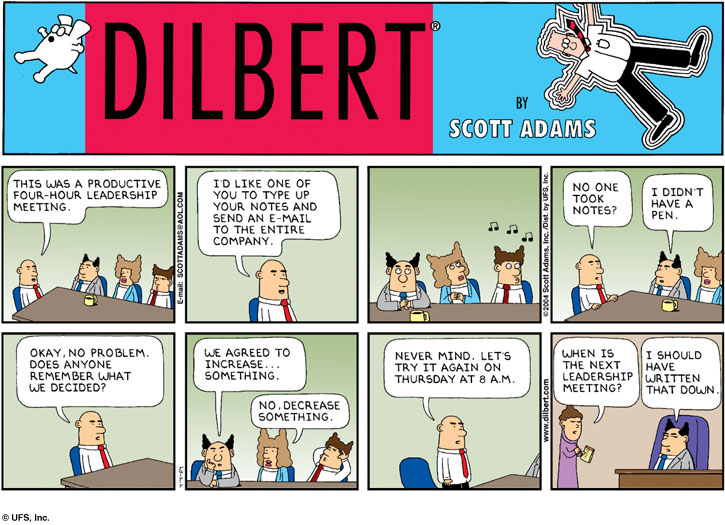How to take notes in meetings

Have you ever been asked to take meeting notes? We’ve all been there, and usually no one is thrilled about it.
However, taking meeting notes is a critical step in moving work forward, and everyone should know how to do it well.
Not clear why you should even take a note? Then by all means start by reading our previous post – we’ve got 5 good reasons for ya.
What notes should I take?
The skill of how to take notes in meetings sounds easy, but it actually takes practice. Team members may talk quickly, and you want to make sure to capture the important points:
- Meeting minutes should be comprised of important facts. Basic example: “Ted is flying to Denver on Tuesday.” The sentence captures who, what, when, and where.
- Issues and decisions are also important to record. For example, “we need to ensure the hotel has a working internet connection for the meeting” (issue to be resolved) or “Sally will accompany Fred to the conference” (decision made by the team).
- Make sure to capture any action plans that result from the issues raised or decisions made. Example: “Sarah will book the flights and hotel, and Sally will purchase conference tickets.”
- Lastly, record any questions raised and their answers, as well as ideas provided by the team. Once you get into the habit of reviewing notes from previous meetings, this will become valuable.
How to take notes
There are many note taking strategies, yet here are some of the basics:
1) Agree who will be the note taker
Agree ahead of time who will take notes, and to make things easier on everyone, rotate team members each time. This is important because then everyone takes responsibility for moving your team’s work forward.
One way to be thorough is to assign multiple participants to take notes, as others may document something you miss.
Make notes visible to other attendees for accuracy and confirmation of understanding. If you can, develop a shorthand (ex: @, =, f2f, +) – you can always go back and fill in the wording later if needed.
2) Ask questions
Don’t make assumptions that you understand what co-workers or customers mean by certain phrases. Get into the habit of clarifying when you are taking notes, and ask questions such as:
- Here is what I heard you say, did I get that right?
- Have we captured everyone’s thoughts on this subject?
3) Assign Tasks
As the note taker, it is your responsibility to assign tasks to yourself and to other team members. Once you write something down, a person realizes that they are now going to be held accountable for that action, and decisions become more real to everyone.
When assigning tasks, ask “who owns this task, and when should it be done?” This way, everyone buys in to the task and holds the assignee responsible for getting it done.
4) Keep focused
A good time to capture notes is when team members add commentary or make small talk. Try to focus on the important takeaways and keep it simple when possible.
5) Table off-topic issues
Sometimes (ok, almost always) meetings tend to veer off topic and pretty soon a few people are discussing a subject that the rest of the team can’t relate to. Speak up when this happens and ask if the topic can be handled outside of the meeting. Also take note if there are items that should be researched and re-visited at a later date.
6) Use note taking software
Using software can make your life much easier. The best note taking apps will allow for multiple attendees to take notes at the same time. This way, everyone can contribute and is responsible for recording them.
After the meeting:
- Review and correct
Read through notes immediately after a meeting and update them while the context is fresh in your mind. This will save you time in the long run. - Distribute Promptly
Even though you may be tempted to go to lunch or start another project, resist the temptation and send your notes to the group as soon as possible. This updates everyone else while the meetings fresh in their mind, quickly reminds people of their follow-up tasks, and makes you look awesome because rarely does this happen! - Take action
Take care of your action items as soon as possible and lead by example.
Final Thoughts
In closing, good note taking can:
- Keep you and others engaged
- Serve as group memory
- Confirm that everyone understands what was discussed
- Record important info and takeaways
Image source: www.dilbert.com



